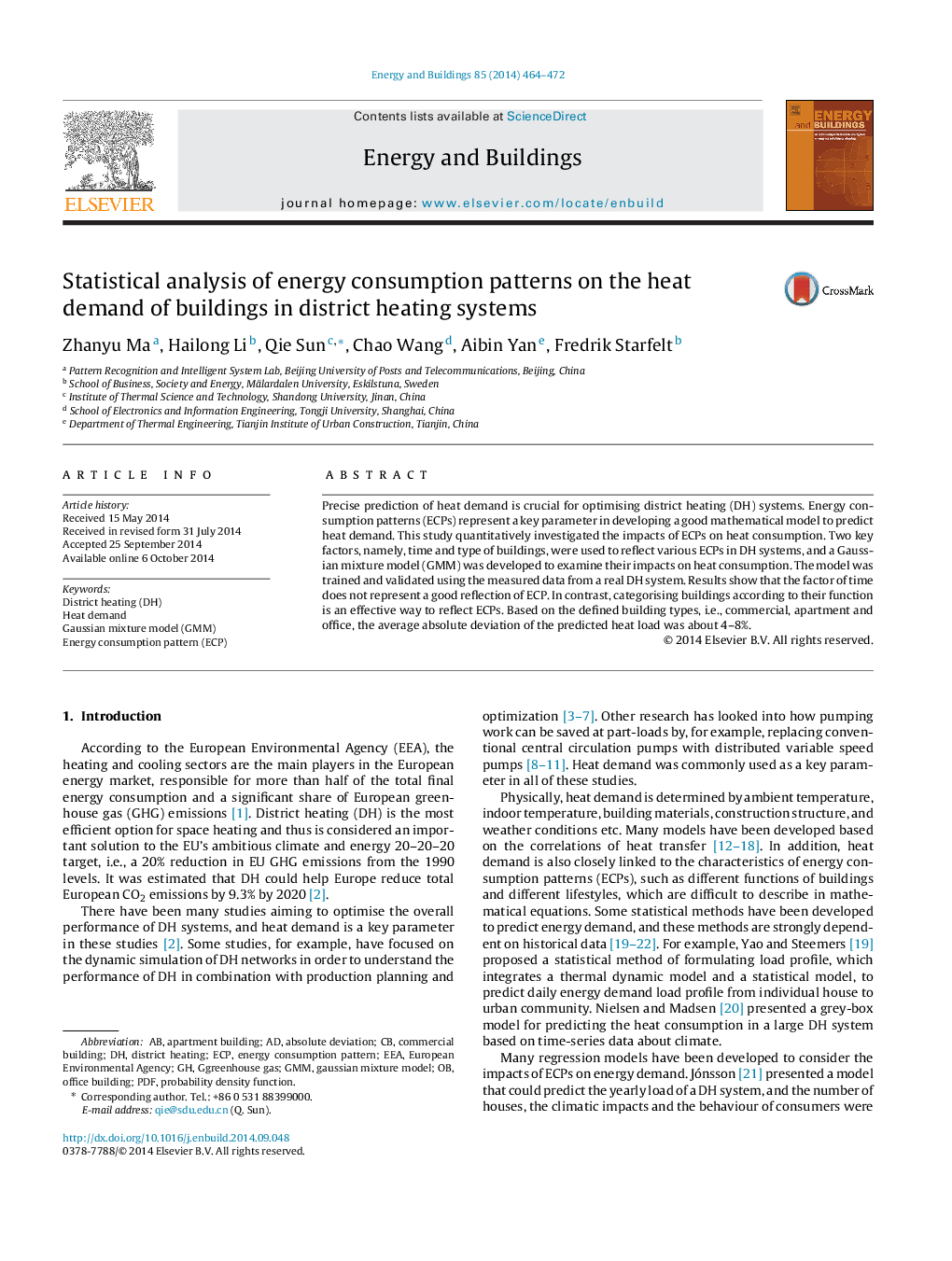| Article ID | Journal | Published Year | Pages | File Type |
|---|---|---|---|---|
| 6733180 | Energy and Buildings | 2014 | 9 Pages |
Abstract
Precise prediction of heat demand is crucial for optimising district heating (DH) systems. Energy consumption patterns (ECPs) represent a key parameter in developing a good mathematical model to predict heat demand. This study quantitatively investigated the impacts of ECPs on heat consumption. Two key factors, namely, time and type of buildings, were used to reflect various ECPs in DH systems, and a Gaussian mixture model (GMM) was developed to examine their impacts on heat consumption. The model was trained and validated using the measured data from a real DH system. Results show that the factor of time does not represent a good reflection of ECP. In contrast, categorising buildings according to their function is an effective way to reflect ECPs. Based on the defined building types, i.e., commercial, apartment and office, the average absolute deviation of the predicted heat load was about 4-8%.
Keywords
Related Topics
Physical Sciences and Engineering
Energy
Renewable Energy, Sustainability and the Environment
Authors
Zhanyu Ma, Hailong Li, Qie Sun, Chao Wang, Aibin Yan, Fredrik Starfelt,
